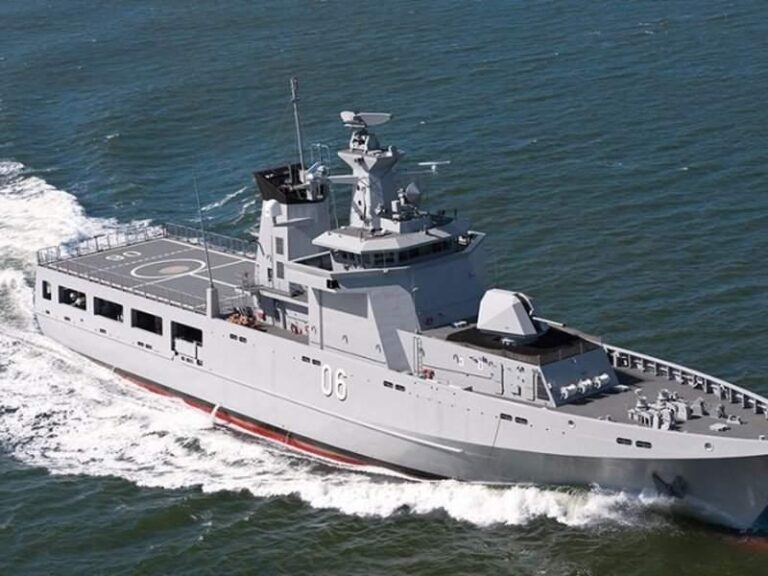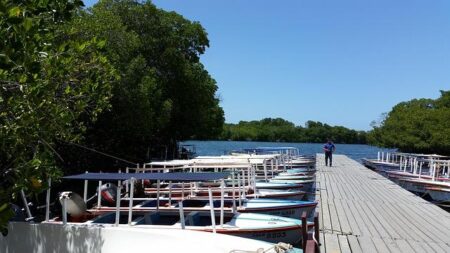Australia has officially commissioned the HMAS Arafura, its latest offshore patrol vessel, marking a significant milestone for the Royal Australian Navy despite the project being completed three-and-a-half years behind schedule. The delay in bringing the ship into service highlights ongoing challenges in the country’s naval shipbuilding sector, raising questions about timeline management and procurement processes. The HMAS Arafura, the lead ship of its class, is expected to enhance Australia’s maritime surveillance and defense capabilities as the Navy seeks to modernize its fleet amid evolving regional security dynamics.
Australia Commissions HMAS Arafura Marking Significant Delay in Naval Expansion
The Royal Australian Navy has formally commissioned the HMAS Arafura, a pivotal milestone in its fleet modernization program – albeit arriving three-and-a-half years behind the initially projected timeline. The delay has sparked discussions among defense analysts regarding the broader challenges facing Australia’s naval expansion efforts, particularly in procurement and shipbuilding sectors. Originally slated for entry into service in late 2020, the HMAS Arafura’s prolonged construction phase underscores ongoing issues related to supply chain disruptions and technical integration complexities.
Despite the setbacks, the arrival of the HMAS Arafura marks a critical enhancement of Australia’s offshore patrol capabilities. The vessel boasts advanced surveillance technologies and improved endurance, aimed at strengthening maritime security across the Indo-Pacific region. Key features include:
- Extended Range: Capable of sustained deployments exceeding 4,000 nautical miles
- Modular Design: Enables flexible mission configurations, from patrol to humanitarian aid
- Enhanced Surveillance Systems: Integration of state-of-the-art radars and communication suites
| Specification | Details |
|---|---|
| Displacement | 2,700 tonnes |
| Length | 80 meters |
| Top Speed | 25 knots |
| Crew Capacity | 40 personnel (expandable) |
Assessing the Impact of HMAS Arafura’s Late Entry on Australian Defense Capabilities
The delayed induction of HMAS Arafura into the Royal Australian Navy has introduced tangible challenges in maintaining Australia’s maritime surveillance and patrol capabilities. Originally slated for commissioning in late 2020, the three-and-a-half-year postponement has created a critical gap during which older vessels have had to extend their operational life beyond planned limits. This extension risks increased maintenance costs and reduced mission readiness, impacting Australia’s ability to respond swiftly to maritime threats in the Indo-Pacific region. Key ramifications include:
- Reduced fleet availability for multi-domain operations
- Increased operational pressure on aging patrol boats
- Potential vulnerabilities in border security and maritime domain awareness
Despite these challenges, the commissioning of HMAS Arafura marks a pivotal moment in modernizing Australia’s defense infrastructure. Equipped with advanced surveillance systems and modular mission capabilities, Arafura enhances the navy’s operational flexibility. Below is a simplified comparison highlighting the capability gaps attributable to the delay:
| Capability Aspect | Pre-Commissioning Status | Post-Commissioning Status | |||||||||||||||||||||||
|---|---|---|---|---|---|---|---|---|---|---|---|---|---|---|---|---|---|---|---|---|---|---|---|---|---|
| Surveillance Range | Limited to coastal waters | Extended to offshore zones | |||||||||||||||||||||||
| Mission Adaptability | Fixed roles | Modular and multi-role | |||||||||||||||||||||||
|
The delayed induction of HMAS Arafura into the Royal Australian Navy has introduced tangible challenges in maintaining Australia’s maritime surveillance and patrol capabilities. Originally slated for commissioning in late 2020, the three-and-a-half-year postponement has created a critical gap during which older vessels have had to extend their operational life beyond planned limits. This extension risks increased maintenance costs and reduced mission readiness, impacting Australia’s ability to respond swiftly to maritime threats in the Indo-Pacific region. Key ramifications include:
Despite these challenges, the commissioning of HMAS Arafura marks a pivotal moment in modernizing Australia’s defense infrastructure. Equipped with advanced surveillance systems and modular mission capabilities, Arafura enhances the navy’s operational flexibility. Below is a simplified comparison highlighting the capability gaps attributable to the delay:
|




